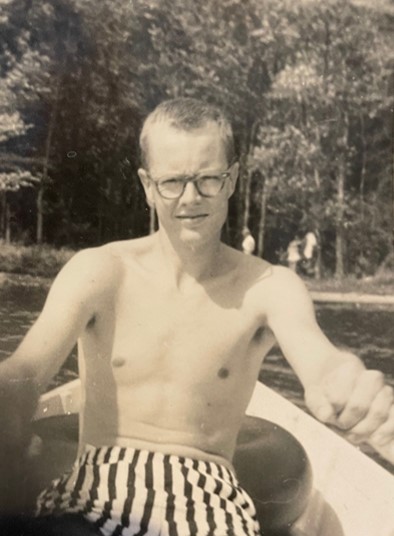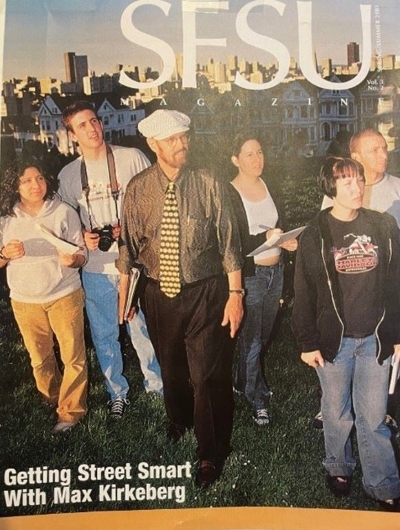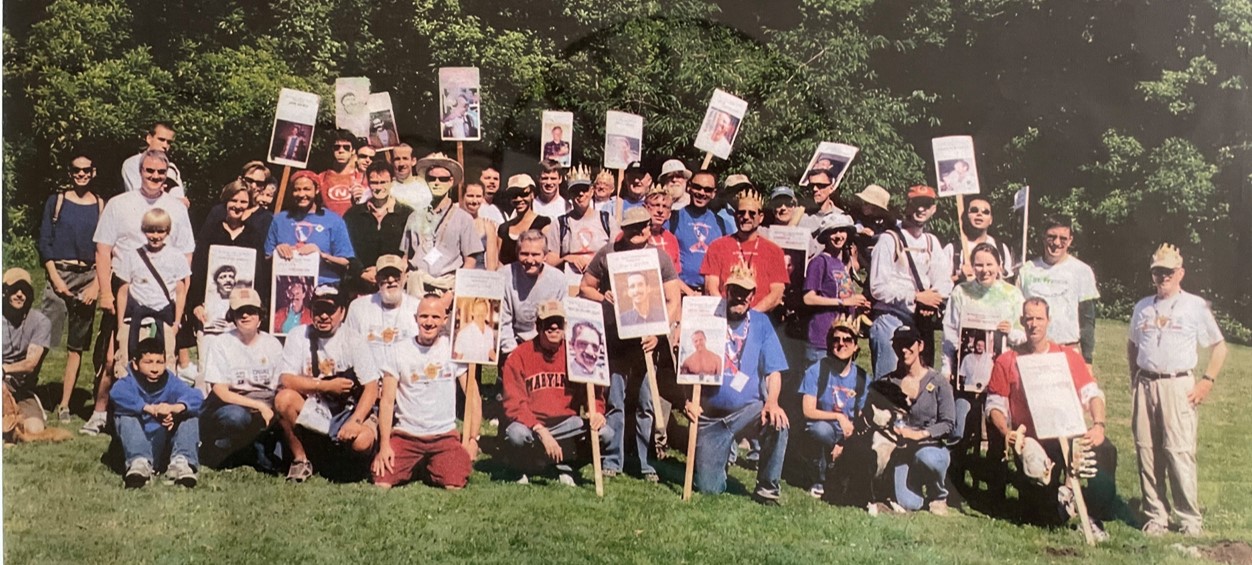Welcome to the Max Kirkeberg Scholarship page. This scholarship was established by Max Kirkeberg and Gabriel Proo. Max Kirkeberg is a retired Professor from the Department of Geography & Environment, now School of the Environment. It is Max’s wish that an annual scholarship be awarded to a School of the Environment undergraduate or graduate student whose studies and goals align with his dedication to the lived and changing environment of the Bay Area.
Max C. Kirkeberg was born in Stanton, Iowa (“the Swedish capital of Iowa”), the only child of high school teachers. His great grandfather was one of the first Swedes to settle in Stanton and built the house the family lived in for several generations. As a young person living in a small town, Kirkeberg had a paper route, was a Boy Scott who achieved the rank of Eagle Scout, played the clarinet for ten years in a concert band, was one of the leads in two school plays, played on first team in basketball, and was active in the Future Farmers of America (FFA). In the summers, he detasseled corn which “was a terrible job everyone did,” worked as a lineman on survey crews doing road repairs at the county, state, and finally federal levels in Northern Idaho. He took vocational agriculture over the four years of high school (his father taught the vocational agriculture classes). The high point of his father’s class was Kirkeberg winning a ribbon for ninth place in a hog judging contest, competing against 250 other boys at the Southwest Iowa FFA convention. He was the highest achieving student from Stanton. The low point of his dad's classes was setting himself and the shop on fire several times while welding.
In those days, Stanton did not allow dancing because dancing led to touching and touching led to trouble so the Stanton students could not have a junior or senior prom. A carnival was its replacement. During Kirkeberg’s junior or senior year he was voted King of the Carnival. He does not recall what they did at the carnival but there was indeed no touching.

Max Kirkeberg at home in Lake Oswego, Oregon
When he registered for the draft, he was told that if he did not go to a school with a ROTC program, he would not be able to attend a four-year college. Despite that warning, Kirkeberg decided to attend a Lutheran liberal arts college in Rock Island, Illinois. His parents put him on a train to Augustana College with a single suitcase in 1952. He was not a particularly ambitious college student, but he was deeply in the closet due to his sexual orientation. As a consequence, he had no social life and did not have anything else to do so he took lots of classes, winding up with a triple-major in geography, political science, and history. He was a good student.

Max lifeguarding at the Institute for World Affairs
As predicted, his college career was interrupted by the draft. Hoping to use the Army to travel, once in the Army he volunteered to go to many countries, He completed paperwork for Germany, France, Italy, United Kingdom, Philippines, Japan, and even Korea which had gone into an armistice. Instead, he was sent to Alabama where it was hard to fit in as a teetotaler and as someone “obnoxiously religious.” After two years in the Army in the South (with no air conditioning) he returned to Augustana and then went on to become a Geography graduate student at the University of Wisconsin, Madison. During this time, he obtained a working fellowship at the Institute for World Affairs in Connecticut. A treasured memory of that summer was serving as a lifeguard. He never had to rescue anyone, but he did have power: you had to get his permission to take out a boat.
He also received a grant to examine how oral history could preserve the history of a region. This was the basis of his PhD thesis. The years 1953-1955 were spent conducting interviews in Northern Nigeria. During that time, he also spent two months in London studying European explorer records in the British Museum.
He was writing his PhD thesis when he came to SF State in 1965. Once in San Francisco, he came out of the closet. He lived in an “accidental” commune once he bought a home; he invited people to visit who subsequently never left and as he says, “and there you have a commune.” He was witness to the closing of the SF State Library for a few years and the late 1960’s SF State College Student Strike, which led to the establishment of the College of Ethnic Studies. By that point, however, he had tenure despite the Geography Department's having a strict rule about not granting tenure to those without a PhD. But they made an exception for Kirkeberg. He had always wanted to be a teacher like his parents, cousins, aunts, and uncles. With this tenure, he had succeeded in securing a place as a professor. He loved every day as a teacher.
As a professor of Urban Geography, Kirkeberg’s most well-known class was Geography 454: "San Francisco on Foot” which he taught for 30 years.
He continued teaching the class as a lecturer once he retired and offered it through the Osher Lifelong Learning Institute. According to a 2003 San Francisco State Magazine article, “For Kirkeberg, the reward of his tours is watching students learn to look and wonder about their surroundings. It’s a trait he hopes they'll carry with them wherever life takes them.”
Kirkeberg has documented the urban geography of the San Francisco Bay Area in almost 60,000 slides taken over 50 years. The collection is available through DIVA, an open digital collections archive built and managed by Academic Technology at San Francisco State University. Kirkeberg’s images of streets, architecture, development, landscapes, culture, and geographical highlights provide an encompassing picture of the diverse neighborhoods that make up San Francisco, as well as the features and regions beyond it in the greater Bay Area. Kirkeberg’s slides document gentrification, ethnic succession, industrial abandonment or conversion, the shift in workforce demographics, the rise and decline of the hippy era, the growth of gay San Francisco, and many other socio-economic factors and events that contributed to San Francisco's urban change.
After Kirkeberg fully retired from teaching in 2019, he and his husband, Gabriel Proo, moved to Oregon while still staying in touch with the School of the Environment which includes the former Department of Geography and Environment that Max served so long for so many years.

Max Kirkeberg with students in his San Francisco on Foot class from the SF State Magazine cover in 2003
Max Kirkeberg was also the founder and leader of the St Francis Lutheran Church and SFSU Geography Department AIDS walk team, which ran from the 1980s to the 2020s, raising more than a million dollars for AIDs research and care, and often competing with the biggest corporate teams for the top fundraising totals each year. Max found the Geographers were always great walkers and ambitious fundraisers but only for a couple of years before moving on, whereas the Lutherans were reliable and were stalwart fundraisers, though started getting older and less able to walk. For this reason, the photo below includes mostly former Geography students.

The St Francis Lutheran Church and Department of Geography AIDS Walk Team: Max Kirkeberg (front center-right, blue shirt) with his AIDS walk team ca 2005. Most of the people in this photo are graduate students of the former Department of Geography & Environment.